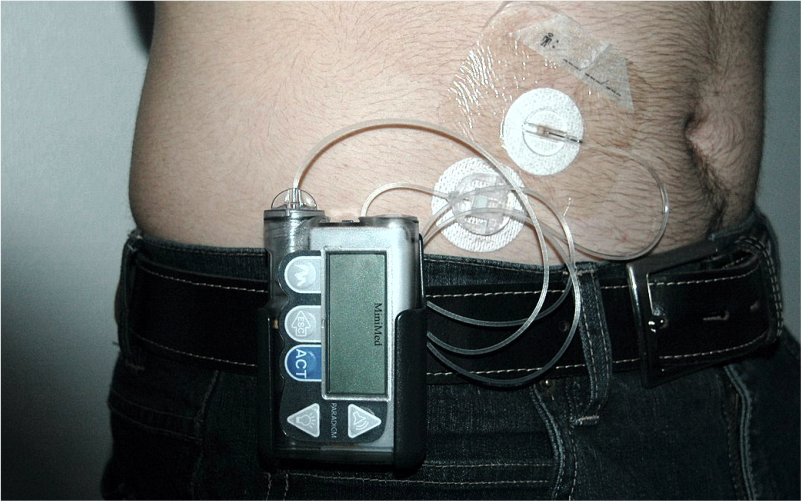Insulin pumps
Insulin pumps are small electronic devices used by individuals with diabetes to deliver insulin continuously throughout the day. They are an alternative to multiple daily injections (MDI) of insulin and offer more precise insulin dosing. Here’s an overview of insulin pumps and how they work:

How it Works
An insulin pump consists of three main components: a pump, a reservoir, and an infusion set. The pump is a small device about the size of a pager or smartphone that holds the insulin and delivers it in controlled amounts. The reservoir, usually filled with rapid-acting insulin, is connected to the pump and holds the insulin supply. The infusion set is a thin, flexible tube that connects the pump to a small cannula or needle inserted under the skin, typically in the abdominal area. The pump is programmed to deliver a continuous, low dose of basal insulin throughout the day, mimicking the basal insulin secretion of a healthy pancreas. Additionally, the user can manually deliver bolus doses of insulin before meals or to correct high blood sugar levels.
When is it Used
Insulin pumps are primarily used by individuals with type 1 diabetes and some individuals with type 2 diabetes who require insulin therapy. They can provide several benefits, including:
Improved insulin delivery: Insulin pumps offer more precise insulin dosing than MDI, allowing for better control of blood sugar levels.
Flexibility: With an insulin pump, users have the ability to adjust their basal insulin rates according to their individual needs. They can also deliver bolus doses easily and discreetly, without the need for multiple injections.
Mealtime convenience: Insulin pumps allow for more flexibility in timing and dosing of insulin around meals, making it easier to match insulin delivery with food intake.
Enhanced glucose control: The continuous delivery of basal insulin helps prevent glucose fluctuations between meals and during sleep. Bolus doses can be adjusted based on carbohydrate intake, exercise, and other factors, contributing to better overall glucose control.
Benefits and Considerations
Insulin pumps offer several benefits for individuals with diabetes, including:
Improved glucose control: Insulin pumps provide precise and customizable insulin delivery, resulting in improved glucose control and reduced risk of diabetes-related complications.
Convenience and discretion: With an insulin pump, users can avoid the need for frequent injections in public or private settings, as the pump can be easily concealed under clothing.
Mealtime flexibility: Insulin pumps allow users to adjust insulin doses based on carbohydrate intake, facilitating more flexibility in meal planning and timing.
Data tracking: Many insulin pumps are equipped with features to track insulin usage, blood sugar levels, and other data, providing valuable insights for diabetes management.
It’s important to note that insulin pumps require regular monitoring and maintenance. Users need to regularly check their blood sugar levels, change the infusion set and reservoir, and adjust pump settings as needed. Additionally, proper education and training on insulin pump use and management are essential.
Discussing the use of insulin pumps with a healthcare professional, such as an endocrinologist or diabetes educator, can help determine if it is a suitable option for an individual’s specific needs and lifestyle. They can provide guidance on insulin pump selection, training, and ongoing support to ensure safe and effective use.







